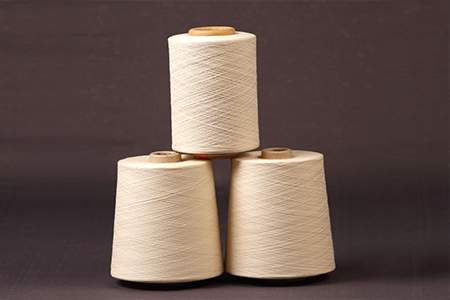1. Cotton Procurement
The company has a long reputation for quality, performance and innovation in the industry. Quality of final product is determined with the quality of raw material. The company takes meticulous care in the selection of cotton. Their dedicated, committed and involved cotton selectors at different stations headed by experienced supervisors, spared no pain in the selection of Kapas or Raw cotton available in the market, SRNML sources "A grade" raw cotton directly comes from cotton ginners having automatic ginning plants in quality cotton growing areas of Madhya Pradesh, Maharashtra and Gujarat.
2. Quality
The quality of yarn produced is conformed to the quality norms specified by the customer. Shri Ramanarayan Mills focuses on quality and ensures that this should be achieved without making any compromise in productivity, which otherwise affects the yarn costing. Quality Control is implemented with sampling, specifications and testing as well as the organisation, documentation and release procedures which ensure that the necessary and relevant tests are carried out, and that materials are not released for use, nor products released for sale or supply, until their quality has been judged satisfactory.
Quality management at Shri Ramanarayan Mills begins with firm commitment and not just support from the senior management and with a well-defined management policy. Quality assurance is the link between production and customers, by which the desired quality can be produced which meets the specification. Our Research and development helps for value addition through product development, which can face competition in global market and satisfy the customers.
3. Sales & Distribution
Build around core competencies with continuous product and technical innovations SRNM today has reached new heights with a global vision to benchmark quality.
Their stringent commitment to global standards of quality has seen the group grow phenomenally over the last decade to create a niche of their own, in the highly competitive world markets. Under the guidance of the directors of the company, the group has developed well connected distribution network for yarn all over India like Mumbai, Bhilwara, Kolkata, etc.
4. Facts of Cotton
› A non-allergenic natural fibre that doesn't irritate sensitive skin.
› Cotton's softness makes it a preferred fabric for garments worn close to the skin.
› It blends easily with most other fibres including synthetics and natural fibres like wool.
› One of the easiest fabrics to dye, as it's white in colour and very absorbent.
› Cotton has a high absorbency rate & holds up to 27 times its own weight in water.
› An ideal fabric for medical & personal hygiene products such as bandages and swabs.
› Cotton breathes easily as a result of its unique fibre structure..
› More comfortable to wear unlike artificial fibre which is unable to provide ventilation.
› Keeps the body cool in summer & warm in winter as it is a good conductor of heat.
› Often used in making of curtains / tents / tarpaulins as its not affected by sunlight.
› Unlike synthetic fibres, cotton is a natural product and contains no chemicals.
› Cotton is very versatile - it can be blended/coated/finished, is dry cleanable, machine washable and easy to print on.
5. Cotton Products
› Almost all parts of the cotton plant are used in some way including the lint, cottonseed, linters, stalks and seed hulls.
› The fibre from one 227kg cotton bale can produce 215 pairs of jeans, 250 single bed sheets, 1,200 t-shirts, 2,100 pairs of boxer shorts, 3,000 nappies, 4,300 pairs of socks or 680,000 cotton balls.
6. Products Made from Cotton Lint/Fibre
› Cotton lint is spun then woven or knitted into fabrics such as velvet, corduroy, chambray, velour, jersey and flannel.
› About 60% of the world's total cotton harvest is used to make clothing, with the rest used in home furnishings and industrial products.
› Well known cotton products include denim jeans, socks, towels, t-shirts, bed sheets and underwear.
› More unusual uses of cotton fibre include tents, car tire cord, fishnets and bookbinding.
7. Products Made from Cotton Seed
› Over half the weight of unprocessed cotton (seed cotton) is made up of seed.
› The most common uses of cottonseed are oil for cooking and feed for livestock. Cotton seed is pressed to make cottonseed oil. Cottonseed can be made into a meal and is a popular feed for cattle and livestock as it's a great source of energy.
› Cottonseed oil can also be used in a range of industrial products such as soap, margarine, emulsifiers, cosmetics, pharmaceuticals, rubber, paint, water proofing and candles.
› Cottonseed oil is cholesterol free, high in polyunsaturated fats and contains high levels of antioxidants (vitamin E) that contribute to its long shelf life.
8. Products Made from Cotton Linters
› Cotton linters are fine, very short fibres that remain on the cottonseed after ginning. They are curly fibres typically less than 3mm long.
› Linters are used in the manufacture of paper (such as archival paper and bank notes) and as a raw material in the manufacture of cellulose plastics.
› Linters are commonly used for medical supplies such as bandages, cotton buds, cotton balls and x-rays.






